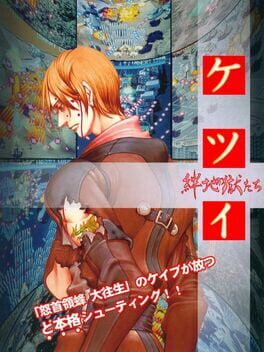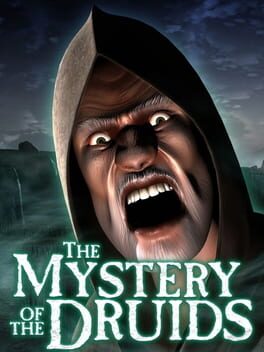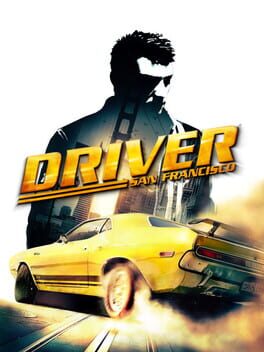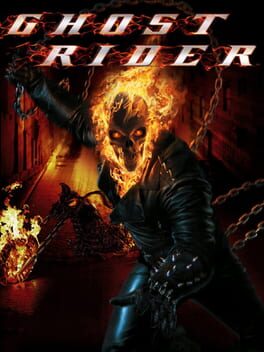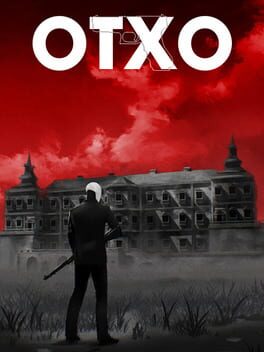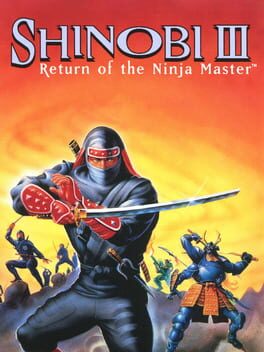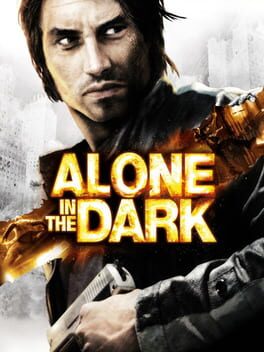Nachy
Barbaric! As Tolstoy wrote... war, what is it good for?
Praying that the lucky clover will always be in your heart!
Badges

Pinged
Mentioned by another user

GOTY '22
Participated in the 2022 Game of the Year Event

Loved
Gained 100+ total review likes

Trend Setter
Gained 50+ followers

Well Written
Gained 10+ likes on a single review

On Schedule
Journaled games once a day for a week straight

Shreked
Found the secret ogre page

Organized
Created a list folder with 5+ lists

Best Friends
Become mutual friends with at least 3 others

Busy Day
Journaled 5+ games in a single day

Roadtrip
Voted for at least 3 features on the roadmap

Donor
Liked 50+ reviews / lists

3 Years of Service
Being part of the Backloggd community for 3 years

GOTY '21
Participated in the 2021 Game of the Year Event

Epic Gamer
Played 1000+ games

Popular
Gained 15+ followers

Liked
Gained 10+ total review likes

Elite Gamer
Played 500+ games

Gamer
Played 250+ games

N00b
Played 100+ games

GOTY '20
Participated in the 2020 Game of the Year Event

Noticed
Gained 3+ followers
Favorite Games
2561
Total Games Played
000
Played in 2024
257
Games Backloggd
Recently Played See More
Recently Reviewed See More
OTXO feels like a game that overcomplicates itself from its source material and misses the points that made the Hotline Miami games enjoyable while not committing fully to its roguelike design, resulting in a confused game that lacks cohesion.
The music is great and the game has some nice fancy visual effects. The particles, the environmental debris, the lighting, the shadows, and the ragdoll physics all add a lot to the game's feel and visual feedback. Unfortunately, I can't say the same for the overall presentation. The monochrome visuals resulted in a very dull and samey-looking environment, which was a lot of the appeal I felt with Hotline Miami where each level had a distinct color palette that made them immediately recognizable even beyond the level design. Not to mention visual clarity is also lessened as the white bullets just blend in more with the monochrome backgrounds.
The problem also extends beyond the presentation, as the procedural generation of the levels despite the handcrafted rooms just results in everything feeling uniform and derivative. It's usually just a bunch of rooms on the left side and right side of the map, and a big open hallway in the middle. This also doesn't flow very well and clashes with some of the more enjoyable aspects of Hotline Miami, which is to try and fully combo the entire level as you figure out the best pathway in getting through the enemies in succession.
The whole scoring aspect is pretty much gimped too. You do still want to keep up high combos for the coins so you can get more abilities, but with the way things work, it's more reliant on having a lucky seed of RNG rather than mastery of the levels and mechanics. Outside this, it's a lot less exciting and inconsistent to score, which again is a shame since I felt this is one of Hotline Miami's main sources of fun.
Then we get to one of the biggest offenders which is the whole health system. I feel a lot of the flow and intensity of Hotline Miami came from the almost-always-one-hit-kill system. OXTO opting for varying damage and health makes sense for a roguelike, but it still clashes a lot with the overall feeling of the combat which undeniably does still take a lot from Hotline Miami. All the guns sound fantastic and punchy, but it's such a disconnect when they take 2 to 3 hits to kill someone, and there's a lot less feeling of danger when your character also can tank bullets for the most part. Some weapons can one-hit kill, which extends to the fact that the game ultimately even contradicts itself with the mechanic that allows you to remove weapons from rotation, and only select the ones you want. Thus you have the option of keeping only the weapons that can one-hit kill and negating the whole damage system in the first place.
The roguelike design overall just doesn't work with Hotline Miami's style, since another large part of what made Hotline Miami work is the quick inconsequential punishment of death where you can just instantly restart, and learn the level like a time-based puzzle where memorization and then execution comes into play. In OTXO, when you die you start from the beginning, and you're more reliant on getting good RNG with abilities that can help you or layouts that aren't too much of a mess. I did finish this game thrice, with a run that didn't involve using abilities, but most of it devolved into abusing mechanics like the bullet time and dodge rolls. Especially as you get further into a run where all the enemies have different modifiers and they all get stacked haphazardly with no real design in mind how they placed.
This then extends to the other poorly thought-out element, which is the boss fights. They're neat on paper, but poor in execution. Except for one samurai-themed boss, most of it comes down to spamming the dodge roll and waiting for your bullet time to cool down, while avoiding the same three or four attack patterns over and over again because the bosses are bullet sponges.
There's an unlockable 'Impossible Mode' that makes it feel closer to the original Hotline Miami games, with damage raised across the board, which translates to all guns pretty much being one-hit kills and survivable by two to three through lucky shaves. I wish the game was designed with this mode in mind as it resolves the bullet sponge problem with the bosses and retains the fast exciting pace of Hotline Miami. The rest of the problems are still here, but this is where I had most of my enjoyment.
I feel like this game would have been better overall if it's just a linear campaign with a dozen levels or so with an upgrade system slapped onto it. There are some neat elements with the systems here, but they just don't work well together. As a Hotline Miami clone, it lacks a lot of the original game's flow and intensity. As a roguelike, it lacks a lot of the extra systems and mechanics most roguelike games have, including permanent upgrades. Outside some modifiers and the ability to unlock guns and select which of them spawn during a run, there's little progression within the systems themselves.
If you're itching for a top-down shooter with some roguelike elements and a Hotline Miami flavoring, and you're willing to look past the shortcomings, this game is mostly fine. But if you just want more Hotline Miami in general, there's a whole bunch of well-made and creative campaigns, levels, and mods out there in the modding scene, even in HM2's Workshop alone. Not to mention the massive overhaul packs and standalone projects. And if you want a roguelike in general, there is a whole sea of them nowadays that also pretty much does a lot of its dedicated systems better.
Also, OTXO's a stoopid name.
The beauty behind Jagged Alliance 2 is how straightforward the core objective is and how everything is built around it. Eliminate the tyrannical despot Queen Deidranna and liberate the nation of Arulco. How you go about completing this objective is up to you. From the beginning, you’re given a sum of cash, a laptop full of resources, intel, and websites to recruit a variety of colorful mercenaries from across the world. You can go slow and deliberate, capturing every sector in Arulco to weaken the Queen’s defenses while building up your battalion of mercs and Arulco’s rebel natives. You can also go fast and strike before the Queen even knows you’ve arrived in Arulco, carefully navigating from the north of the country to the capital in the south, blowing up the walls and somehow evading the entire army as you neutralize the Queen in her bedroom. This idea extends to everything else in the game, where quests are only marked with notes, and the solution to them is up to you.
There’s a fantastic sense of adventure and discovery, where there’s always something to find that makes each sector of Arulco a worthwhile exploration. To give an example with slight spoilers - one of my favorite questlines is meeting a mob boss who controls a city in the north side, and wants me to steal a grail for him that’s in a museum located farther south in the country. I already secured the city that has the museum, so it was just a matter of me getting someone sneaky and stealing the grail. I took him back to the mob boss, gave him the grail, and accepted a hefty sum of cash to help me out further into my journey of liberating Arulco. Hours later I secured a village and talked to one of the locals, who maintains a culturally significant ancient site nearby. He tells me they’ve been missing a grail that had been an important part of the land’s ancestral history. I felt bad that I had already given the grail to the mob boss, but I didn’t want to reload a save as I'd already made hours of progress since then. So, I went ahead and went back to the mob boss, assuming there was a way to talk to him again about the grail. He spat me the same lines after I gave him the grail, which is to enjoy the money and spend it in his city’s establishments. The whole city was surrounded by his goons, so it’s going to be a tough fight. But I went ahead and positioned my squad to advantageous points and fought them all. To my surprise, the grail was still in the mob boss’ corpse. I picked it up, gave it back to the village guy, and gained a positive reputation with the people of Arulco. As a bonus for my trouble, I even found a secret stash in the mob boss’ mansion leading underground into an abandoned mine and gained even more cash. The game is full of neat organically designed quests like this, and again the idea of leaving you to your own devices on how you resolve them.
The combat is straightforward, solid, and feels very lethal. Instead of showing the chance to hit and damage of your attacks like in most turn-based combat games, JA2 only suggests you the optimal range of your weapon. This results in less number crunching and min-maxing the situation, and encourages the player to take risks and go with their gut feeling. You can use action points to aim your weapon increasing the likelihood of hitting your shot. Do you take the risk of a farther headshot to dispatch a dangerous armored enemy ASAP? Or do you go for the safer option, where you move a bit closer, shoot unaimed toward his torso, and hope it’ll slow him down so you can assess your options in the next turn?
Going further into the lethality of combat, even a leg shot can incapacitate someone, making armor and first-aid very important. Just getting someone to bleed and not have medical assistance within the next turn can put them out of commission easily. Not to mention burst and full auto fire have separately calculated hits, making even just a single stray bullet hit dangerous, with a full hit practically a guaranteed kill. I love how the number crunching overall feels very natural. Stats and numbers give you an idea of the capabilities of mercs and weapons but are designed to keep things grounded and consistent where a bullet is a bullet, a knife’s a knife, and point-blank range even with the worst shot in the world can explode someone’s head with a shotgun. Not to mention explosives, which there are a variety of as well, coupled with destructible environments. It’s all very exciting, chaotic and fun.
Then we have the strategic layer of the game wrapping all of the other elements together. Logistics and budget management are all critical, alongside making sure your band of mercs doesn’t kill each other. You aren’t just going to have to consider the abilities of your mercs, you also need to learn their personalities, history, disabilities, prejudices, and so-and-so. Having a couple of exes for example that had a bitter break up might kill each other when you have them in the same sector, and it isn’t exactly great for morale if you pair up the racist in a squad of racially diverse people. On the flip side, you’ll also have long-time friends or potential friends build up their bonds and become an even stronger synergy beyond whatever their stats are. It’s all wonderfully designed, and you’ll be spending equal time in combat as you with the strategic management, as you make sure your weapons are repaired, mercs patched up, and well rested while making sure the Queen’s army doesn’t take back the sectors you have liberated.
All of this is presented in a campy pastiche of 80s and 90s action movies that’s a lot of fun, while also managing to keep serious moments grounded, including the potential deaths of your mercs and other characters. It’s all fantastic and strikes a nice balance between tonal shifts.
I already liked JA2 back when I first played it around the mid-2000s, but recently replaying it and giving it a more in-depth playthrough alongside the experience of playing more games throughout the years gave me a newfound appreciation of how wonderful this game is. My motivation to replay throughout the series started after finding out JA3 was released, and I even ended up delaying playing that because as soon as I finished JA2 again, I went straight for a replay onto the hardest difficulty level. JA2 shot up immediately as one of my all-time favorites in general.
If any of this piqued your interest, you may have come across the common suggestion of playing with the 1.13 mod. I highly recommend not doing this on your first playthrough. 1.13 itself is an amazing project, but it overhauls the game a whole lot, being a labor of love that was worked on since 2005 and is still being worked on to this day. But even when you read through the new features and settings and make it as close to the vanilla game as possible, it’s still very different and is just overwhelming overall to get through when you don’t have a first-time experience of the game. I instead suggest playing it vanilla using the JA2 Stracciatella source port which makes it run nicer on modern systems alongside some bug fixes.
Just from the opening hours, it tries its best to be bombastic and cinematic, showing off multiple gameplay elements that showcases some advanced technologies that other games were still trying to figure out and integrate at the time. Physics puzzles and complex actions, alongside larger than life scenarios that predates more successful attempts a year later like Uncharted 2.
It’s genuinely neat to see how the various mechanics actually play an important role in progressing through the game, such as setting objects on fire and breaking down doors, where even just the straight up logic of shooting something and breaking it open works. I actually got stuck more times than not because I was thinking of it as a more conventional video game with more abstract logic, and not the straightforward idea of just letting physics and blunt force get me through a path. Even with its more fantastical leaning puzzles, there’s a clever idea behind it all. It’s a shame that all of it is wrapped around with some of the most tedious controls and unreliable inputs that make it a bigger effort than it should be. Various sections I had to repeat constantly or had to do something weirdly specific just so that the game registers it. It’s always a mixed feeling of getting very frustrated followed by a thought of how cool it would have been if it was actually done well.
The game’s combat suffers a similar way in that it does try to make you use the game’s environments and give you various tools to achieve your goal, but again, are all made to be more tedious than intended due to how broken and irresponsive the controls are. There’s even the neat idea of making things diegetic with your inventory being an actual physical jacket with all your items attached, but is ultimately frustrating as it all happens in real time and the game can’t decide between a fast-paced action game and a more methodical survival horror.
The open world portion is mostly unnecessary and probably is one of the major things that hurt the game more than it helps. There’s also the arbitrary padding of making you go through burning 50 out of a 100 ‘evil roots’ scattered across the map, which feels like a proto-version of the ubiquitous Ubisoft-styled towers we see often in most open world games today. But I admire how much it did try to tie in with the game’s core gameplay loop of survival horror and puzzle solving, such as having to use a big truck to make a ramp out of a broken road. Again, all of these things aren’t exactly executed well, but the ideas on paper are so neat that it really made me wish all of these were incorporated into a better game.
There are a couple of genuinely fantastic elements the game has. For one the soundtrack is great, elevating various scenes and making them feel better than they really are, and the protagonist Edward Carnby himself. I can’t tell if he’s meant to be self-aware and campy or unintentionally hilarious, but it’s all the better for it. It’s also just a shame that the story also ends in the wettest of farts, regardless of the two endings you choose.
Despite the frustrating experience, I do have to appreciate the game’s features such as having multiple chapters selects that takes you to various points in the game. I shouldn’t have to want or need to skip through frustrating sections, but the fact they’re there is at least also an unintentional convenience that makes the messy experience more tolerable.
Alone in the Dark isn't a good game, but it is an interesting one that has shown a lot of potential. It was weirdly ahead of its time, with some of its elements being better executed by games that came out relatively soon after. Beyond that, also a fair number of unique ideas that no other game have tried, for better or worse.
One final FACT to ponder, if you are curious enough into playing this yourself, make the experience a lot less miserable preferably if you got some friends to tag along for the ride.
I didn’t play this alone, and fuck you anyway!
